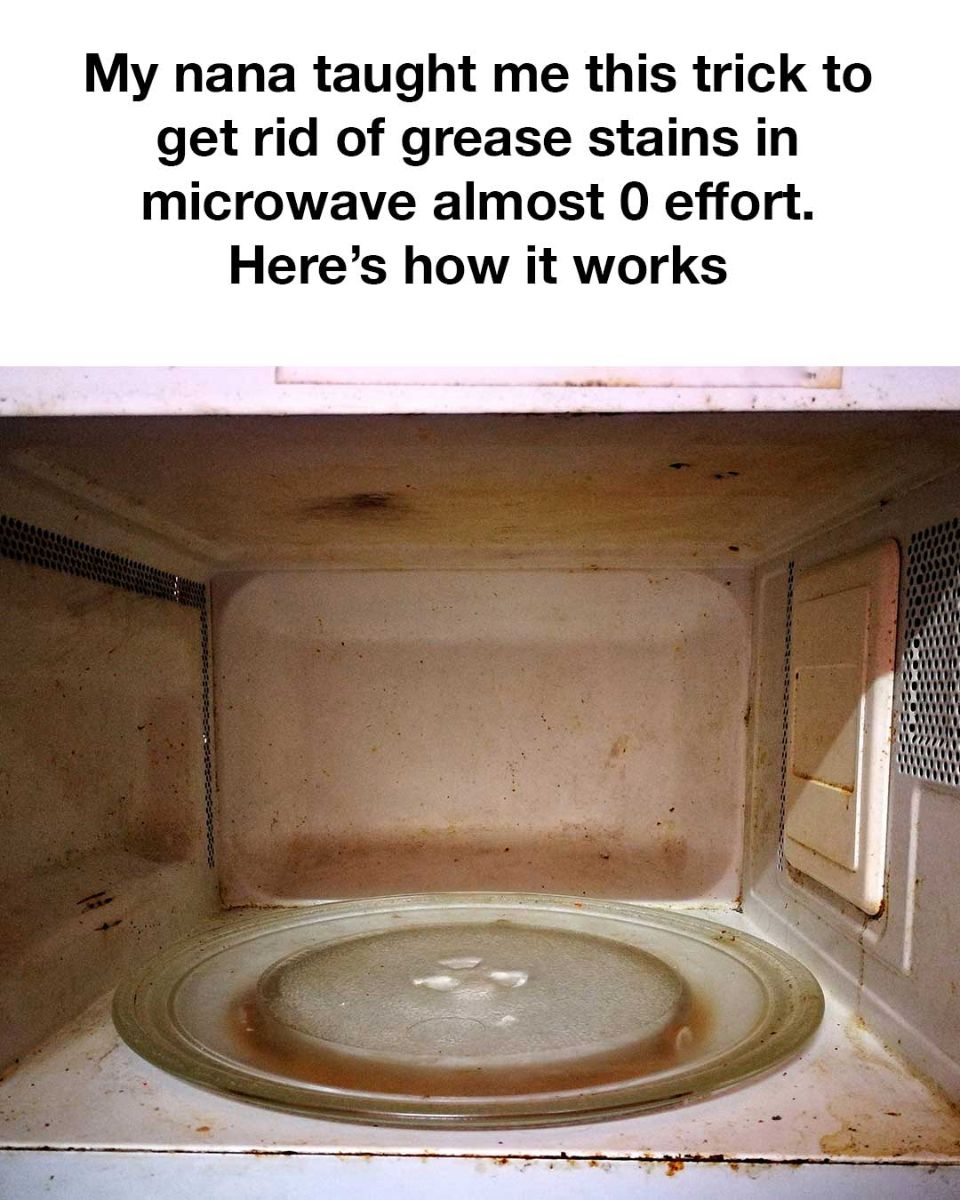
Man, I’ve been doing this the hard way for way too long!
Step-by-Step Guide:
Prepare Your Cleaning Solution: In a microwave-safe bowl, mix 1 cup of water with 2 tablespoons of white vinegar. If you want to add a pleasant scent and extra cleaning power, you can also squeeze in the juice of a lemon or add a few tablespoons of lemon juice to the mixture. You can even throw in the lemon halves after squeezing them for an added burst of citrus freshness.
Heat the Solution: Place the bowl in the microwave and set it on high for about 5 minutes. The idea is to bring the mixture to a boil, which will create steam. Depending on the power of your microwave, you might need to adjust the time slightly. The steam will fill the microwave, condensing on the walls, ceiling, and even the door, softening the grease and food stains.
Let It Sit: Once the microwave stops, don’t open the door immediately. Let the bowl sit inside for another 5 minutes. This step is crucial as it allows the steam to do its magic, breaking down the grease and grime. The longer you let the steam sit, the more effective this method will be at loosening the tough stains.
Wipe Away the Grime: Carefully remove the bowl from the microwave – it might be hot, so use oven mitts or a towel. Take a clean cloth or sponge and wipe down the inside of the microwave. You’ll notice that the grease and grime come off easily with minimal scrubbing. For any particularly stubborn spots, dip the cloth or sponge into the warm vinegar solution and give those areas a little extra attention.
Final Rinse: Once all the grease and stains have been removed, take a clean, damp cloth and wipe down the inside of the microwave to remove any leftover vinegar residue. You’ll be left with a clean, fresh-smelling microwave with almost zero effort!
Why This Method Works
The reason this trick works so well is due to the combination of heat and vinegar. The steam generated from boiling water softens dried-on food particles and grease, making them easier to wipe away. Vinegar, a natural acid, helps break down grease and grime. It also acts as a disinfectant, killing bacteria and neutralizing odors without leaving a harsh chemical smell. Adding lemon juice not only enhances the cleaning power with its natural acidity but also leaves behind a pleasant citrus scent.
Extra Tips and Tricks
Regular Maintenance: To keep your microwave in top condition, try this steam cleaning method once a week or whenever you notice stains starting to build up. Regular cleaning prevents grease from hardening and becoming more difficult to remove.
Use a Microwave Cover: To minimize mess, consider using a microwave cover or splatter guard. These inexpensive items can catch most splatters, making cleaning even easier.
Baking Soda for Extra Tough Stains: If you have particularly tough or burnt-on stains, you can sprinkle a little baking soda on a damp sponge and gently scrub the area. Baking soda is mildly abrasive and can help lift stubborn grime without scratching the microwave’s surface.
Clean the Turntable Separately: Don’t forget to remove the microwave turntable and clean it separately. Most turntables are dishwasher-safe, or you can wash them by hand with warm, soapy water.
Thanks to my Nana’s simple yet effective trick, cleaning grease stains in the microwave has never been easier. By using natural ingredients like vinegar and lemon juice, you can avoid harsh chemicals and get your microwave sparkling clean with almost no effort. Plus, you’ll enjoy a fresh, pleasant scent each time you open the microwave door. Give it a try and see just how easy it is to keep your kitchen appliance looking like new!
